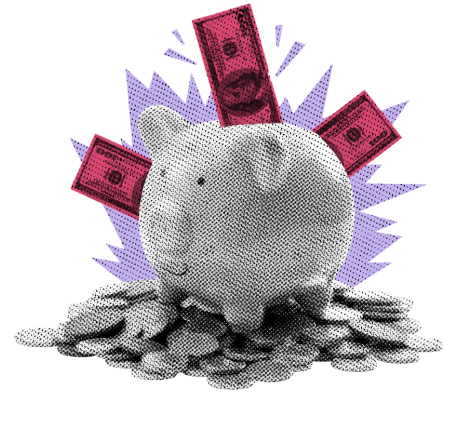Unmasking the 10-Year Yield: What Technical Indicators Are Telling Us About the Market’s Future

Stocks had a rough session yesterday, giving up ground, as traders continued to be perplexed with rising treasury yields, wondering if there is an end in sight. Even the Nasdaq and its shiny tech stocks couldn’t break free from the gravity of rising bond yields.
Strange brew. Do you find it odd that I am talking about bond yields a lot lately? Come on, I know that you would like to tune in and hear me say that the sky is the limit on stocks, and here are three picks which are guaranteed to deliver triple-digit returns. Don’t worry, I am not mocking you. I would love to be able to tell you that. Actually, I would love to hear that from someone else. But, alas, there is only one guarantee when it comes to the stock market, and that is - it will never do what is convenient for you (you can quote me on that). If there were guarantees, there could be no gains. Actually, the closest thing you can get to a guaranteed return is by buying a US Treasury Bill, Note, or Bond. “There he goes,” you are thinking, “he brought the conversation back to bonds before even finishing the first paragraph.”
Bear with me, my loyal followers, this is important. I send you my daily chartbook… every day… as its name implies. I don’t know if you thumb through it often, regularly, or never at all, but today, I want to start with page 16. That is my chart of 10-Year Treasury Note yields. Wait, I am just going to drop the chart here for you to see.

That top panel of the chart shows the daily price movements of the 10-year Treasury Note. It is a candle chart on which green-colored bars are up days and red, down. The horizontal, blue lines and diagonal numbers are resistance lines, while their red counterparts are support lines. The horizontal, black, dashed lines are Fibonacci lines. I am not going to delve into those today, but I want you to note that they are important inflection points which can serve as either support or resistance. Whether you believe in the “magic” of Fibonacci numbers or not is not as important as the reality that traders – the guys and gals that move the markets for a living – use these numbers, so they are meaningful. On the right-hand side of the chart, you can see how yields climbed at a pretty steep ascent after bottoming in mid-September. You will note that, on its climb, it blew through 5 potential lines of resistance, the most recent being 4.12 and 4.17. Above 4.17, there would be resistance at 4.25, because it is a round number, and traders love round numbers, and that was challenged yesterday, but the notes closed just below at 4.24. Stay with me – I have more for you.
There is a thick, solid, blue line which is the 200-day simple moving average. Traders use that to determine the long-term, secular trend, because it filters out a lot of the day-to-day noise. You will note that it was trending down until the start of October, and now it is trending slightly upward, and that is a bullish signal. Moreover, the line itself, is an important inflection point which can be a support or a resistance level. You will note that the 10-year pushed through that line a few sessions ago. Now, pay attention. Here is a little secret that my fellow quant hedgies don’t want me to tell you. They all use it as a buy signal! Now, it is not the only signal that they use, but it is a time-proven one that is definitely in use. They don’t want you to know, because it is so simple, that you might doubt their raging intelligence if you knew they used it. They do, lol 🤣.
Let’s take a step back. I have now showed you several indicators that are bullish for 10-year yields. Remember, bullish for yields means that they have a propensity to go higher. That’s right higher yields. That means lower prices for the underlying bonds, but that’s not what we are talking about today. We want to know where 10-year bond yields can go from here. We now know that 4.25 is an important resistance point. If we get closes above it, the next resistance is around 4.3 where there is not only a resistance point (4.29), but also a Fib line. AND… a round number! What happens after that? Well, there is big open expanse above that level with the next meaningful resistance at 4.49 (Fib line) and that very, very round 4.5.
There is one last thing. Momentum is another very important indicator, also used by most hedge funds. You can see that I have drawn in 2 simple momentum lines. A long-term momentum line (black) and a short-term one (green), and they are both positive. The longer one is more closely watched and there is a lot of academic literature around the efficacy of momentum as an indicator of future price movement (check out this seminal work, if you are so inclined: Jegadeesh, N., & Titman, S. (1993). Returns to Buying Winners and Selling Losers: Implications for Stock Market Efficiency. Journal of Finance, 48(1), 65-91. doi:10.1111/j.1540-6261.1993.tb04702.x). I think it is so important, that I plotted the momentum in the bottom panel, the orange line. You will see that it was negative until turning positive recently (crossed over the 0 line). That blue line is a linear regression of recent momentum, and you will see, just by eyeballing it, that it has a positive slope, which means that it is accelerating! All these are bullish indicators for 10-year yields.
So, what does all this mean? This chart tells a story which shows how bond yields have climbed- actually, spiked, and that all the conventional technical indicators suggest that there could be more room for growth. That is not good if you own 10-year bonds and don't plan to hold them to maturity. That is also not good if you own 10-year maturity treasury ETFs like IEF, down by some -4.3% since hitting its high in mid-September. That may also not be good for stocks!
This is where it gets tricky. Higher bond yields mean higher discount rates in discounted cash flow models. Those are used by analysts to come up with stock values. No matter how you slice it, higher yields mean higher weighted average cost of capital (WACC), which shows up in the denominator of the equation. That means, when it goes up, the theoretical, intrinsic value of the stock – goes down. It’s just math, stupid. Additionally, we need to look at WHY these 10-year yields are climbing. A few days ago, I posited that the potential increases in deficit spending will lead to higher long-term bond yields as the Treasury will need to borrow more to make ends meet. This is a well-known thing. The reason for the deficit hike is that both presidential candidates have proposed many gifts to voters, all of which will come at a cost. One of those candidates is keen on tariffs which are inflationary, which also causes bond yields to climb.
So, to sum it all up. By observing the chart of 10-year yields we see that it has climbed through many key points of resistance, crossed over its 200-day moving average which has also turned positive, its short-term momentum is highly positive, its long-term momentum is positive and is accelerating, and that if we get some closes above 4.25, yields may test 4.3 and ultimately 4.5. Given that we are very close to the election, the VIX is elevated, we are in earnings season, economic numbers are mildly positive, and the Fed seems to be leaning toward slower rate-cuts, we may see some more volatility ahead. The market is a great clearinghouse of information and what we are seeing play out before us, is the market doing its job at factoring in the vast amount of information that is swirling around these days. Don’t lose focus on the 10-year Note. You may not be a bond trader, but its movement will continue to influence your stocks. Page 16 😉… every day.
YESTERDAY’S MARKETS

NEXT UP
- Initial Jobless Claims (October 19th) is expected to come in at 242k, up ever slightly from last week’s 241k claims.
- S&P Global Flash US Manufacturing PMI (October) is expected to come in at 47.5, slightly higher than the prior periods 47.3. This can be a market mover given the weak narrative and recent numbers around manufacturing.
- S&P Global Flash US Services PMI (October) may have slipped to 55.0 from 55.2.
- New Home Sales (September) probably climbed by +0.6% after falling by -4.7% in August.
- Earnings this morning: Dow, UPS, Valero, Labcorp, Southwest Airlines, American Airlines, and KKE all beat on EPS and Revenues while notable losers were Carrier Global, Hasbro, Northrop Grumman, Tractor Supply, Brunswick, Keurig Dr Pepper, Union Pacific, Beyond, and Harley-Davidson. Earnings after the closing bell: Capital One, Weyerhaeuser, L3 Harris, Universal Health, Skechers, ResMed, Digital Realty Trust, Deckers Outdoor, Mohawk, and Western Digital.
.png)

